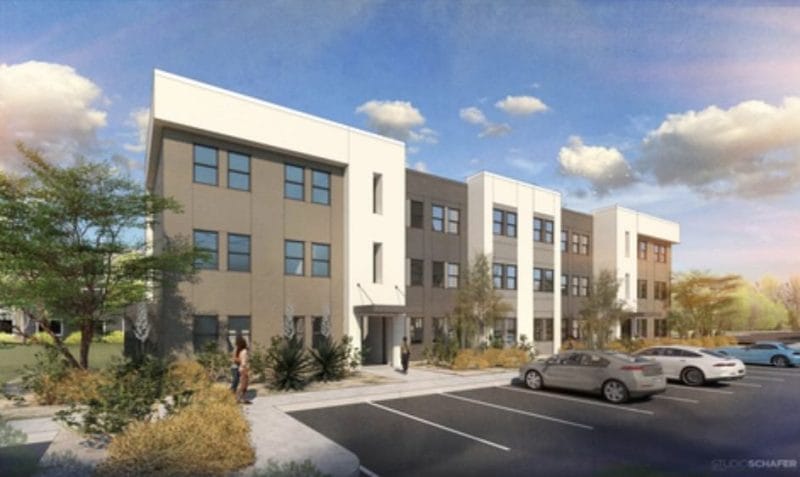The Monday Morning Quarterback
A quick analysis of important economic data released over the last week
By Elliot D. Pollack & Company
I have been a practicing economist in Arizona since 1969. I started my career as an economist for the largest bank in the state at that time and finished my career as an economic consultant, advisor, and keynote speaker. I have been more than a casual observer and participant in the economic development process over the last 50 years. I have seen ideas and organizations, good and bad, come and go. I have seen good times and bad times in terms of how the state and its political subdivisions approached economic development. I have a good understanding of what works, what doesn’t, and why. With that experience, I can say without equivocation that the present set of economic development organizations led by the Arizona Commerce Authority (ACA) is by far and away the best and most successful I have observed over the last five decades.
The ACA is, by any standard, one of the best in the country. It was the brainchild of political and civic leaders who recognized the importance of creating quality jobs focused on high-tech and export-related industries. The quality and composition of the companies they have brought in over the past several years have improved the nature of the state’s economy, including the latest round of semiconductor giants, electric vehicle and battery manufacturers, and other high-value companies. While some might have chosen Arizona without assistance, many would not have without the services of the ACA and other such organizations. Over the last 5 years, the ACA has helped bring in more than 115,000 direct jobs (more than $94 billion in potential new investment) with average annual wages well exceeding the statewide average. Counting the proven multiplier effects, the total is nearly 240,000 jobs created. And that doesn’t include the tens of thousands of construction jobs generated per year nor does it take into account any of ACA’s efforts working with local small businesses and entrepreneurs.
Virtually every successful economy is dependent on base industries which generate demand from outside the region. This includes manufacturing, business or consumer services, tourism-related businesses, or a post-secondary institution attracting out-of-state students. In each case, money is imported from outside the state, creating jobs and tax revenues locally. Those DIRECT jobs then create INDIRECT employment to provide goods and services such as legal, accounting, maintenance, etc. Finally, INDUCED jobs are created by the spending of direct and indirect employees on items such as food, entertainment, housing, transportation, and medical services, just to mention a few. Those ripple effects occur throughout the region, and base industries create the highest multiplier effects. For example, last year a total of 2.1 jobs were created in the state for each base job brought in. And while the multiplier effects are considered secondary, they are no less as real as the base jobs.
It’s a competitive world out there. Marketing ourselves as an economic region, supplying relevant business information (and how to negotiate the myriad of doors necessary for an outsider to understand the process), as well as providing a full understanding of our competitive picture, is a must. We compete with 49 other states and other countries throughout the world for jobs and industry. Many of our competitors have bigger economies and can provide significantly more resources. Fortunately, Arizona is now competing extremely well (even with much larger states), in large part due to professional organizations like the ACA. In fact, over the past 15 years, we have gone from being at the back of the pack to being near the top of the list when major companies look to expand or relocate.
Tax revenues generated by the companies that ACA and others have attracted are a large multiple of their recruiting cost. These new companies created almost $1 billion in tax revenues last year alone which allowed cities, towns, counties, and the state to afford services at levels that they would otherwise probably not have been able to offer. It is truly a win/win situation.
We must compete to bring businesses and jobs to the state to create more opportunity for the state’s residents, create a higher standard of living, grow demand for small and local businesses already here, and generally better the economic lives of the people of Arizona. We should not let politics hurt the economy of the state. It has taken years and an unbelievable amount of hard work by smart and dedicated people to overcome past political foibles that threatened our standard of living. We should not allow that to happen again.
Now, on to this week’s data.
U.S. Snapshot:
Employment surpassed expectations despite showing signs of cooling. The economy added 275,000 jobs in February exceeding economists’ projections of 198,000. The majority of gains were Private Education & Health Services (85,000), Leisure & Hospitality (58,000) and Government (52,000). Manufacturing was the only sector to lose jobs in February. The unemployment rate rose to 3.9%, up from 3.7% last month.
Job openings declined in January to 8.86 million, down from 10.43 million a year ago and well below the 12.18 million peak in 2022. Hiring activity outpaced separations by 5.69 million to 5.34 million. The are an estimated 1.45 job openings per unemployed person.
Productivity increased at an annualized rate of 3.2% while labor costs increased by 0.4% during the same period. The Fed continues to monitor the job market and inflation as the rest of the economy awaits hinted rate cuts.
ISM’s services PMI pulled back from 53.4% to 52.6% in February. The level remained above the threshold signaling expansion of the sector and overall economy. The index has expanded in 44 of the last 45 months.
Consumer credit increased $19.5 billion in January. Revolving credit saw a $8.4 billion increase while nonrevolving accounted for $11.1 billion of the increase.
Arizona Snapshot:
Arizona saw positive employment revisions in its latest release. Employment in 2022 was revised upwardly by 17,400 jobs or from 4.2% to 4.8%. 2023 saw an increase of 34,700 jobs equating to a 2.6% annual increase compared to the preliminary growth rate of 2.1%.
Both Greater Phoenix and Greater Tucson received upward employment revisions. Greater Phoenix grew at a revised growth rate of 3.0% in 2023 and a total of 35,500 additional jobs in the last two years. Greater Tucson added 2,100 additional jobs after revisions.
In February, Arizona lost a non-seasonally adjusted 38,300 jobs which was well below the 51,000 average loss (2010-2019). No sectors gained jobs in February. Greater Phoenix saw 34,700 jobs lost.
January’s total taxable sales in Arizona grew 0.3% for the year matching the increase in taxable retail sales. Maricopa County saw a 0.1% increase in total taxable sales but a 0.1% decrease in retail sales.






